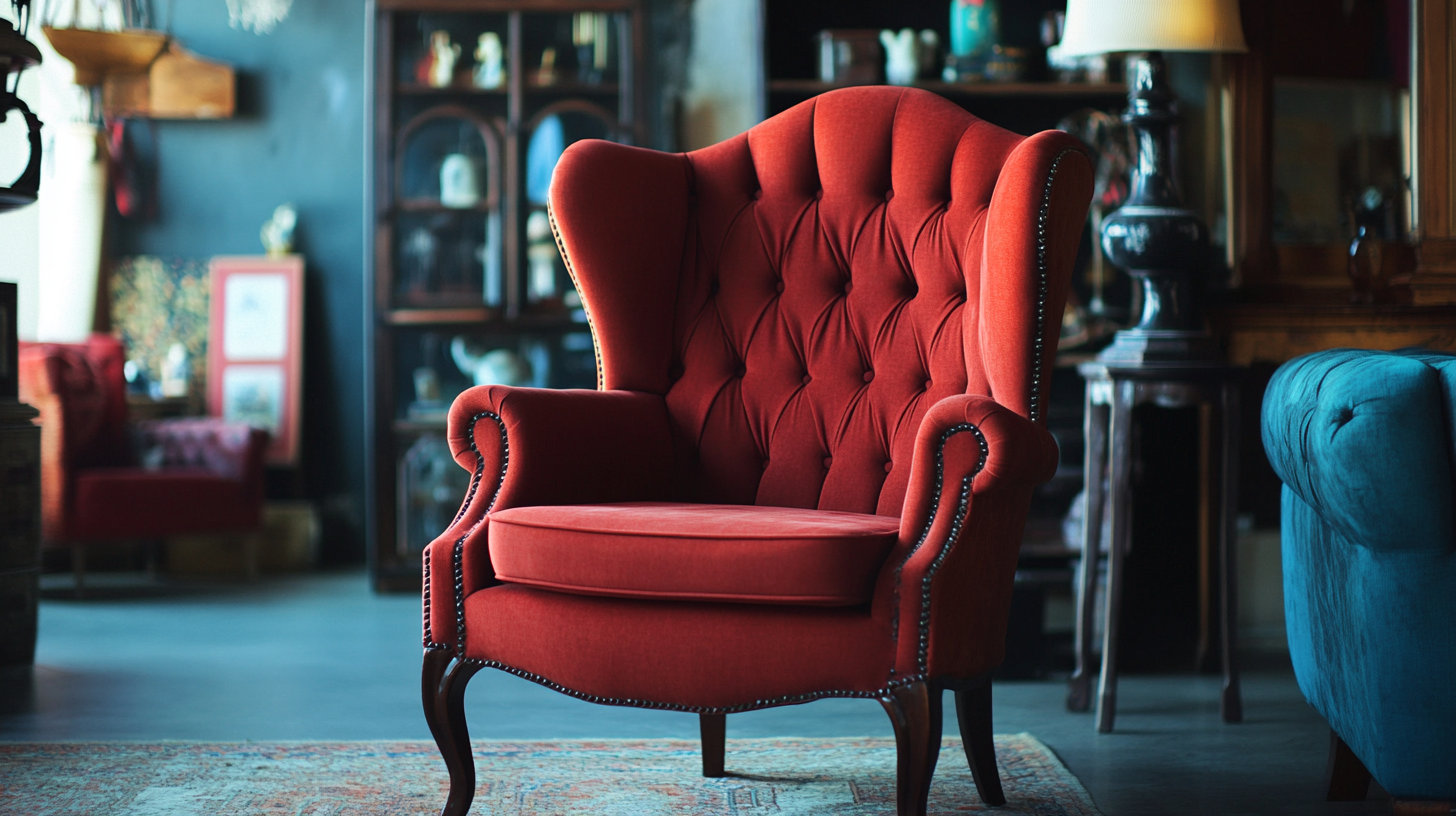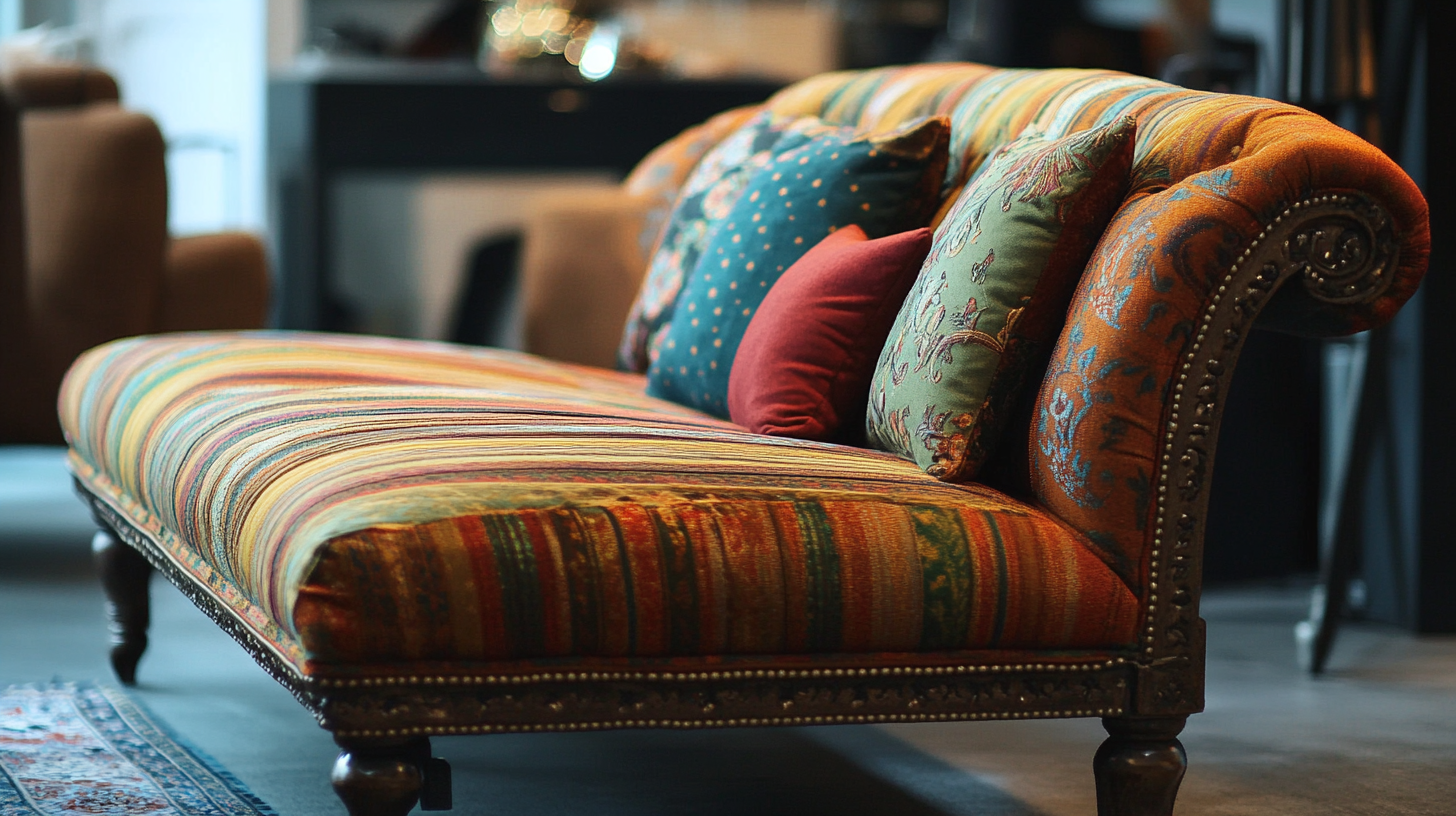Essential Guide to Selecting Stylish Furniture for Your Global Purchasing Needs
The global furniture market is projected to reach a staggering $650 billion by 2025, as reported by various industry analysts. As consumer preferences shift towards stylish and functional designs, the demand for stylish furniture continues to escalate, making it a critical consideration for buyers operating on a global scale. With the rise of e-commerce and increased access to international markets, selecting the right pieces that not only align with aesthetic trends but also cater to cultural preferences has become essential. Moreover, reports indicate that nearly 60% of consumers prioritize style over price when making furniture purchases, highlighting the importance of incorporating fashionable designs into your selection process. This guide aims to provide valuable insights and practical strategies to help you navigate the complexities of choosing stylish furniture that meets diverse purchasing needs across different regions.

Identifying Key Style Trends for Global Furniture Markets
In the ever-evolving world of furniture design, identifying key style trends is essential for companies aiming to meet global purchasing needs. According to the latest report by the International Furniture and Home Accents Market (IFHA), the global furniture market is projected to reach $650 billion by 2025, with increasing emphasis on sustainability and minimalist designs. Consumers are more conscious of their purchases, gravitating towards pieces that not only showcase style but also align with their values regarding environmental impact.
Moreover, the rise of remote work has significantly influenced furniture trends, with a growing demand for multifunctional and ergonomic pieces. The Global Workspace Report indicates that 73% of business owners are investing in home office furniture, favoring designs that optimize space while maintaining aesthetic appeal. This shift highlights the importance of adaptability in furniture design, allowing brands to cater to the unique needs of diverse markets across the globe, from urban apartments to expansive homes.
As international furniture trade continues to thrive, staying attuned to these evolving trends is crucial. The American Home Furnishings Alliance (AHFA) reveals that adapting to regional preferences—such as color palettes and material choices—can enhance market penetration and customer satisfaction, making it vital for manufacturers and retailers to maintain flexibility in their design and sourcing strategies.
Stylish Furniture Style Trends in Global Markets
Understanding Material Choices for Durable and Stylish Furniture
When selecting stylish furniture for a global market, understanding material choices is paramount not only for aesthetic appeal but also for durability and sustainability. As trends shift toward eco-friendly living, materials such as reclaimed wood, bamboo, and recycled plastics are gaining traction. According to industry reports, the sustainable furniture market is projected to grow significantly, with an anticipated compound annual growth rate (CAGR) of over 12% from 2023 to 2030. This growth reflects consumers' increasing preference for environmentally responsible products that don’t compromise style.
In 2023, experts emphasize that integrating sustainability into furniture design necessitates careful consideration of materials. For instance, the PVC synthetic leather market is evolving, highlighted by a shift toward high-durability options that cater to both the furniture and automotive industries. With consumers becoming more discerning, the ability to balance aesthetics with functionality and environmental impact is essential. Brands are urged to adopt a selection strategy that prioritizes ‘green’ materials, ensuring their offerings not only meet customer demands but also contribute positively to global sustainability efforts. By focusing on material choices that reflect durability and style, manufacturers can create compelling products that resonate with environmentally conscious consumers.
Material Choices for Stylish and Durable Furniture
Balancing Aesthetics and Functionality in Global Furniture Selection
In the quest for selecting stylish furniture that meets global purchasing needs, balancing aesthetics and functionality is crucial. Recent discussions, particularly with designers like Xander Noori and Keon Khajavi-Noori, have emphasized the redefinition of luxury through the integration of form and function. They advocate for the use of natural materials, including sustainably sourced woods and stones, which not only elevate the design quality but also respect the environment. This aligns with current trends in sustainable furniture design, where a significant focus is on customization and biomimicry to enhance product competitiveness in global markets.
Furthermore, initiatives such as the Iquo Café Collection designed by Ini Archibong showcase how elegance and lightness can work harmoniously with functionality, making it ideal for both indoor and outdoor settings. Drawing inspiration from West African heritage, Archibong enhances Knoll’s modern design legacy, illustrating how cultural narratives can enhance furniture aesthetics. Moreover, recent literature reviews reveal a growing interest in integrating Zen aesthetic principles into contemporary furniture, advocating for serene and sustainable designs that cater to mindful consumers who prioritize environmental consciousness alongside stylish living. Thus, understanding these trends can greatly inform your global furniture selection strategy, ensuring that every piece is not only beautiful but also purposeful.

Navigating Cultural Influences in Furniture Design Choices
When selecting furniture for diverse global markets, understanding cultural influences on design choices becomes essential. A recent report by the Research Institute of Furniture Design indicates that over 60% of consumers consider cultural factors when purchasing furniture. This highlights the importance of tailoring designs to reflect local aesthetics and traditions, which can significantly enhance market appeal and consumer satisfaction.
For instance, in Scandinavian countries, the emphasis on minimalism and functionality is reflected in the clean lines and natural materials commonly used. Conversely, in Southeast Asia, vibrant colors and intricate patterns are often favored, representing local heritage and craftsmanship. A study by Global Design Trends noted that adaptable furniture designs that incorporate regional motifs not only foster brand loyalty but can also lead to a 20% growth in sales in targeted markets.
Moreover, understanding cultural nuances can help avoid design missteps. A stark example includes Western companies misjudging color use in Asian markets, where red is often associated with good fortune. By investing in ethnographic research and cultural insights, businesses can navigate these complexities, ensuring that their furniture not only meets functional needs but also resonates emotionally with consumers across different cultures.
Essential Guide to Selecting Stylish Furniture for Your Global Purchasing Needs
| Region | Cultural Influence | Furniture Style | Key Materials | Color Palette |
|---|---|---|---|---|
| North America | Minimalism & Functionality | Contemporary | Wood, Metal | Neutral Tones |
| Europe | Art Nouveau & Baroque | Traditional | Wood, Upholstery | Rich Colors |
| Asia | Traditional & Spiritual | Zen & Minimalist | Bamboo, Silk | Earthy Tones |
| Africa | Tribal & Eclectic | Rustic | Wood, Leather | Vibrant Colors |
| Latin America | Cultural Fusion | Colonial & Modern | Wood, Textile | Warm Colors |
Sourcing Sustainable and Ethical Furniture for Global Needs
As the demand for stylish yet sustainable furniture continues to rise, sourcing ethically produced furniture is becoming increasingly essential in global purchasing decisions. According to a report by the Global Sustainable Furniture Council, the global sustainable furniture market is expected to reach USD 100 billion by 2025, reflecting a growing consumer consciousness about environmental impact. Shoppers are more frequently prioritizing materials with low ecological footprints, pushing brands to innovate with reclaimed wood, recycled metals, and organic textiles.
Moreover, the ethical sourcing of furniture goes hand-in-hand with sustainability, affecting purchasing choices significantly. A survey conducted by Statista indicates that 66% of consumers are willing to pay more for sustainable products. This shift in consumer behavior has prompted manufacturers to adopt transparent supply chain practices and incorporate fair labor standards in their production processes. By selecting suppliers that uphold these principles, businesses can not only meet customer expectations but also contribute positively to the global economy and environment.
As we navigate these choices, it’s essential to consider certifications that affirm sustainable practices, such as Forest Stewardship Council (FSC) certification or the Global Organic Textile Standard (GOTS). Such credentials help ensure that the furniture acquired not only aligns with personal aesthetics but also supports broader sustainability goals, making it a win-win for both purchasers and the planet.


 Catalog
Catalog Replacement Cushions
Replacement Cushions New Jersey Catalog
New Jersey Catalog